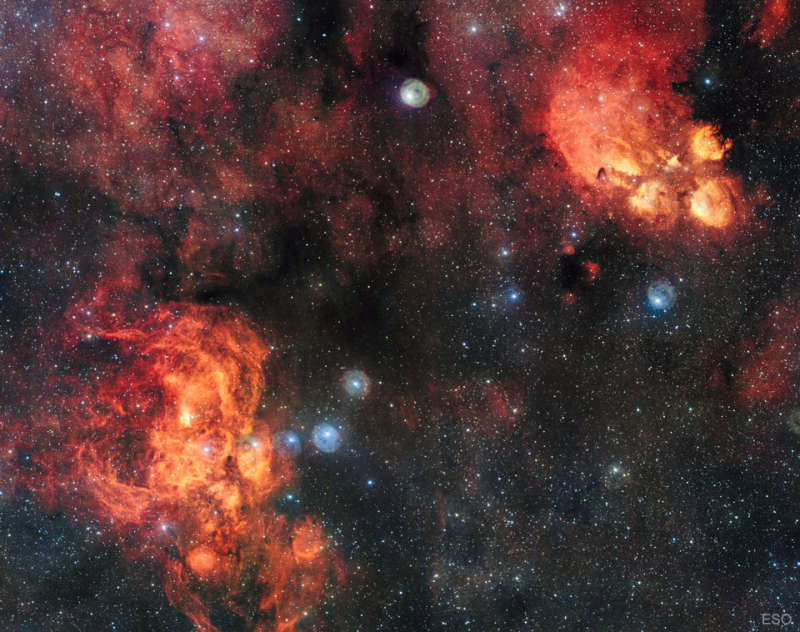Credit & Copyright: ESO,
VLT Survey Telescope
Explanation:
Why is the Lobster Nebula forming some of the most massive stars known?
No one is yet sure.
Near the more obvious
Cat's Paw nebula on the upper right,
the
Lobster Nebula, on the lower left and cataloged as NGC 6357, houses the open
star cluster
Pismis 24, home to these tremendously bright and blue
stars.
The overall red glow near the inner star forming region results from the
emission of
ionized
hydrogen gas.
The surrounding nebula,
featured here,
holds a complex tapestry of gas,
dark dust, stars still forming, and newly born stars.
The intricate patterns are caused by complex interactions between
interstellar
winds,
radiation pressures,
magnetic fields, and
gravity.
The full
zoomable version
of this image contains about two billion pixels,
making it one of the largest space images ever released.
NGC 6357 spans about 400 light years and lies about 8,000
light years away toward the constellation of the
Scorpion.
1999 2000 2001 2002 2003 2004 2005 2006 2007 2008 2009 2010 2011 2012 2013 2014 2015 2016 2017 2018 2019 2020 2021 2022 2023 2024 2025 |
Yanvar' Fevral' Mart Aprel' Mai Iyun' Iyul' Avgust Sentyabr' Oktyabr' Noyabr' Dekabr' |
NASA Web Site Statements, Warnings, and Disclaimers
NASA Official: Jay Norris. Specific rights apply.
A service of: LHEA at NASA / GSFC
& Michigan Tech. U.
|
Publikacii s klyuchevymi slovami:
emission nebula - star formation - emissionnaya tumannost' - zvezdoobrazovanie
Publikacii so slovami: emission nebula - star formation - emissionnaya tumannost' - zvezdoobrazovanie | |
Sm. takzhe:
Vse publikacii na tu zhe temu >> | |
